 BHL is committed to give priority to Healty, Safety, Security and Environment and shall endeavour to take every reasonable and practicable step to prevent and eliminate the risk of injuries, health hazards and damage to properties. BHL is committed to give priority to Healty, Safety, Security and Environment and shall endeavour to take every reasonable and practicable step to prevent and eliminate the risk of injuries, health hazards and damage to properties.
We are committed to:
- Achieving injury-free workplaces
- Eliminating spills and environmental incidents
- Identifying and mitigating key environmental risks
- Promoting healthy workplaces and mitigating significant health risks
- Operating incident-free, with industry-leading asset reliability
- Maximizing the efficient use of resources and assets
To meet these objectives, leaders at all levels establish and maintain a culture where everyone believes that all incidents are preventable and the "zero incidents" is possible. The requires active leadership and engagement by all of our employees.
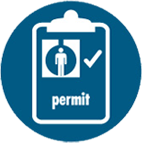 |
 |
 |
 |
Work with a valid work
Permit when required |
Conduct gas tests
when required |
Verify isolation before
work begins and use
the specified life
protecting equipment
|
Obtain authorisation
before entering a
confined space |
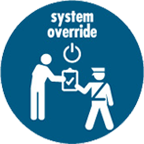 |
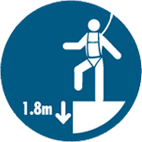 |
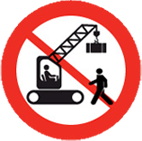 |
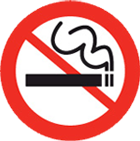 |
Obtain authorisation
before overriding or
disabling safety critical
equipment
|
Protect yourself against
a fall when working at
height |
Do not walk under a
suspended load |
Do not smoke outside
designated smoking
areas |
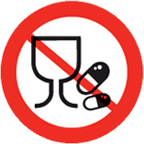 |
 |
 |
 |
No alcohol or drugs
while working or
driving |
While driving, do not use
your phone and do not
exceed speed limits
|
Wear your seat belt |
Follow prescribed
Journey Management
Plan |
|
|
 |
 |
 |
|

|
SITING THE LUBRICANTS STORE
|
Ideally lubricants should be stored under cover of a reasonably constant, moderate temperature. In practice, this may not be possible and the lubricants store may have to be at least partly outdoors. However, whether it is outdoors or under cover, the store should be sited so as to provide:
- Good access for delivery vehicles
- Plenty of vehicle unloading room
- Properly equipped unloading dock with direct access to the store
- Clean dust free conditions for unsealing and dispensing
- Easy distribution to the principal points of use
- Simple inventory control, and at-a-glance check on the conditions of containers
- Space for empty barrels and returnable containers
|
OUTDOOR STORAGE
|
If protected from extremes of temperature and from ingress of water, most lubricants are unaffected by climatic conditions and may be stored outdoors for limited periods. The following products should never be stored in the open:
- Refrigerator Oils
- AeroShell Oils and Compounds
- Greases
It is preferable for packaged lubricants to be opened under cover and be subsequently stored under cover. The risk of contamination is greatly increased when lubricants are decanted or dispensed outdoors Condensation or water ingress is more likely when a barrel is only part-full.
Oil barrels standing in the open suffer variations in temperature, and corresponding variations in internal pressure. This leads to "breathing" where there is a leaking seal, with moisture liable to be drawn in - particularly if the barrel is standing bung-up, for the top of the barrel forms a rain trap. Water on top of the barrel can also cause rusting, and the obliteration of markings. For these reasons barrels should be stored tilted, on their side, or bungs-down. The bungs of tilted or horizontal barrels should be of the 3 o'clock and 9 o'clock positions, to help ensure the gaskets are kept in contact with the oil in the barrel.
In every case, barrels should be stored off the ground on stillages or in racks, well clear of surface water. They must never stand directly on a surface containing corrosive clinker. Regular examination should be made for signs of corrosion, for obscuring of identification marks, and for evidence of weakening seams or seals.
Special care should also be taken with the storage of smaller packages such as drums or pails. These are not designed to withstand severe weather. If outdoor storage is unavoidable, they should be placed under cover on stillages, or protected from rain by tarpaulins while ensuring the free circulation of air. |
| |
INDOOR STORAGE
|
Indoor storage is always preferable. However, if space is limited, it should be reserved for small packages, for opened packages, and for the special categories listed earlier under Outdoor Storage. Rarely will indoor temperatures fall so low as to affect a lubricant adversely. However, excessive local heat from steam pipes, furnaces etc. should be avoided to prevent thermal degradation or volatilisation of sovent containing grades. (N.B.: In many cases, insurance requirements or local fire regulations necessitate separate storage facilities for volatile products). If one part of the store is warm, it should be reserved for high viscosity (thick) oils to make dispensing easier. The lubricants store should be kept dry at all times, to prevent the corrosion of containers which would occur in damp conditions.
|
| |
STACKING BARRELS
|
If space is insufficient to allow barrels to be stored on horizontal stillages, they may be vertically stacked on pallets or stored in horizontal or sloping racks. Whichever method is adopted it should allow individual packages to be readily accessible with the minimum of disturbance to those not immediately required. A system of shock rotation must be devised, to avoid the accumulation of old stock. "First-in, first-out" is a good principle to establish. When other packages are free stacked on top of one another, the safe height varies according to the stability of the stack and the weight which the lower packages can support. The use of pallets or slatted frames stabilises the stack and helps prevent damage to the lower layers. Steel racks offer greater convenience for loading, retrieval, inventory control and stock rotation. The sloping rack with one side for loading and the other (lower) side for retrieval, is an effective means of ensuring "first-in, first-out" barrel stock movement.
|
| |
HANDLING BARRELS
|
The standard 209 litre barrel weighs about 185kg when filled with oil. It is strong, being designed to be re-used several times, but is readily damaged by bad handling. The barrels must never be dropped when being unloaded or moved. The impact can burst the seams causing subsequent leaking or contamination of the contents. There are many suitable methods of handling barrels, but the most widely accepted are:
- Forklift truck (either horizontally on the standard fork, or vertically with a signle or four-barrel
- Two-wheel hand truck
- Triangular drum dolly
- Manual elevator
- Manual side-delivery stacker
- Chain hoist and trolley on 'I-Beam' bridge
- Rolling (by two workers)
|
| |
STORAGE OF GREASE
|
Barrels containing soft grease should be stood upright. The standard 180kg grease barrel has a large opening, the seal of which is readily damaged by careless handling. This may lead to the leaking of soft grease from a horizontal stored barrel. |
| |
GOOD STOREKEEPING
|
New packages should be wiped clean around the bungs, the labelling checked, and any marked variation from the product's normal colour, smell or consistency reported. If there is any reason to doubt the good condition of a lubricant, the tank or packages concerned should be quarantined to isolate the problem and consulted for specialised advice. Lubricants must only be dispensed from clean, dedicated containers. Never be tempted to use ad-hoc oil measures. Covered receptables should be provided for clean lint-free wipers and for dirty wipers. A drip tray should be positioned beneath each barrel tap. Split oil can cause accidents and should be cleaned up without delay. Sawdust is effective, but represents a fire hazard and should be removed as soon as it becomes oily.
Crystalline materials are available as a substitute for sawdust, but leave gitty debris on the floor which, while usefully anti-slip, may provide a source of contamination. Measuring cans with easy pour spouts allow the issue of oil to be recorded. Records should be accurate and complete, with the full type and grade of each lubricant noted. Abnormalities in the amounts of a particular lubricant issued should be investigated. Grease guns should be filled cleanly and carefully, for grease acts as an abrasive when mixed with grease or dirt.
When empty, lubricant containers should have their bungs or lids securely replaced to prevent contamination.
Never re-use empty lubricants packages. Cases have been known of waste oil, other lubricants, chemicals, fuels and even water being stored in empty lubricants packages and being inadvertently used in place of the service lubricant. Results can be dangerous, and sometimes catastrophic.
Empty barrels should not be used for road barriers or for supporting scaffold poles or trestles. It is especially important not to use barrels for brazing or welding trestles, or to cut them up with oxy-acetylene equipment, because of the risk of explosion.
|
| |
| SAMPLING
|
Samples of lubricants are sometimes required for analysis. After the barrel has been rolled to agitate the contents, a metal or glass sampling tube, or 'thief', is used to withdraw a sample. It is essential that both the 'thief' and the container into which the lubricant sample is poured are absolutely clean, dry and odour free.
|
| |
| CONTAMINATION IN USE |
Lubricants must periodically be drained from the machine and replaced by fresh oils. Some used oils, particularly in less arduous applications, can be reclaimed for future use by settling, centrifuging, water washing or filtration.
Cutting oils are especially liable to contamination in use. For example, oil films on the surface of an emulsion may indicate from a leaking gearbox or hydraulic system. When a soluble oil is prepared for use, the oil must be added to the water in the recommended amount, with consistent stirring to form a stable added to the oil, as an unstable emulsion may result. The water must be clean, and mixing should take place in a clean separate tank rather than in the machine sump.
|
| |
| FIRE PRECAUTIONS |
Packaged lubricating oil and grease does not represent a serious fire hazard. However, most lubricants have the potential for combustion and explosion in certain circumstances. The hazard is related to the flash point of the product. Lubricants with a flash point less than 55°C should be stored in closed containers away from heat in a well ventilated place. When the product is used in an open tank, the latter should be well hooded, well ventilated, and earthed to prevent static sparks. When not in use, the tank should be tightly covered. Products with a flash point of 55°C or greater require no special fire precautions, but should be stored away from heat whenever possible.
Lubricating oil is potentially dangerous in conjunction with more flammable materials. Oil-soaked sawdust, rags or cleaning paper must not be allowed to accumulate. If soaked with fatty oils they can ignite simply by, for example, coming into contact with a high temperature steam pipe.
Oil stores must be equipped with CO2, dry chemical or foam type extinguishers, and with sand filled fire buckets.
Water should not be used for suppressing fires, as the burning lubricant may float on the surface and spread the
fire. The lubricants store should be designated a 'No Smoking' area.
|
| |
| WASTE OIL DISPOSAL |
Waste oils are subject to re-use or destruction largely according to economic factors.
Re-use may follow re-fining, laundering (e.g. by filtering or centrifuging) or downgrading (e.g. for use as a bitumen flux oil); or maybe as a fuel oil.
When waste oil is too heavily contaminated to allow re-use, the only courses are incineration after suitable pre-treatment, or disposal by controlled dumping on an approved site in accordance with environmental legislation.
|
| |
| DELIVERIES |
All deliveries should be supervised by a responsible person to ensure that the correct quantity and grade of lubricant is off-loaded or discharged. Delivery tickets should be signed by customers to verify that the correct
grade and quantity have been received.
|
| |
| HEALTH & SAFETY |
Shell lubricants present little or no health hazard provided they are used as recommended, and reasonable care is taken to keep them off the skin and away from the eyes, and to avoid ingestion or inhalation of vapours or mists.
Frequent and prolonged contact with mineral oils can give rise to skin ailments, and Operatives are advised to follow the basic general Health & Safety precautions listed below.
- Wear working overalls, impermeable aprons and gloves, etc. to eliminate unnecessary contact with oil.
- Avoid using dirty rags to wipe skin; to seek first-aid treatment immediately for any injury, however slight; to
report any skin complaint without delay.
- Know where to obtain first-aid advice and medical attention.
- Wash regularly and use non-hazardous cleansers, barrier and conditioning creams.
- Change and dry-clean work clothes regularly.
- Use, if possible, separate lockers for outdoor and working clothes.
- Ensure the arrangements for the extraction of fine mists and sprays are in proper working order.
- Ensure that metal particles and swarf are removed from machines with suitable implements rather than by hand.
- Ensure machine splash guards and machine protection devices are properly adjusted.
- Ensure that the hazardous substance markings on packages which identify toxic, harmful or flammable products are
understood and obeyed when storing, transporting or using the product.
- Observe all safety, hygiene and 'good housekeeping' rules at all times.
|
| Before Discharge |
| Driver to Adhere |
Customer's Representative at Site to adhere |
- Drive slowly & carefully and stop at the designated area
- Safely place tyre stoppers/chokes.
- Place 2 units of fire extinguishers (dry poser type) at appropriate loctions
- Ensure unloading area is free from any source of fire
|
- Ensure access road to unloading area is flat and clear from any hazard/obstacle
- Check the quantity in the skid tank to ensure sufficient ullage
- Ensure the product and the quantIty to be discharged is stated in the Delivery Order
- Wear safety shoes and gloves
- Ensure all seals at every manholes and discharge faucets are in good condition, intact and the seal serial numbers match the numbers recorded in the Delivery Order
- Break the seals of the designated outlets according to the order
|
- Connect bonding wire of the tanker to the appropriate bonding point
- Connect discharging hose correctly
|
|
- Use aluminium pail to take product sample from each compartment
|
- Ensure product is free from any foreign particles and water
|
| After Discharge |
- Close all valves before detaching connections
|
- Ensure all compartments empty
|
|
|
